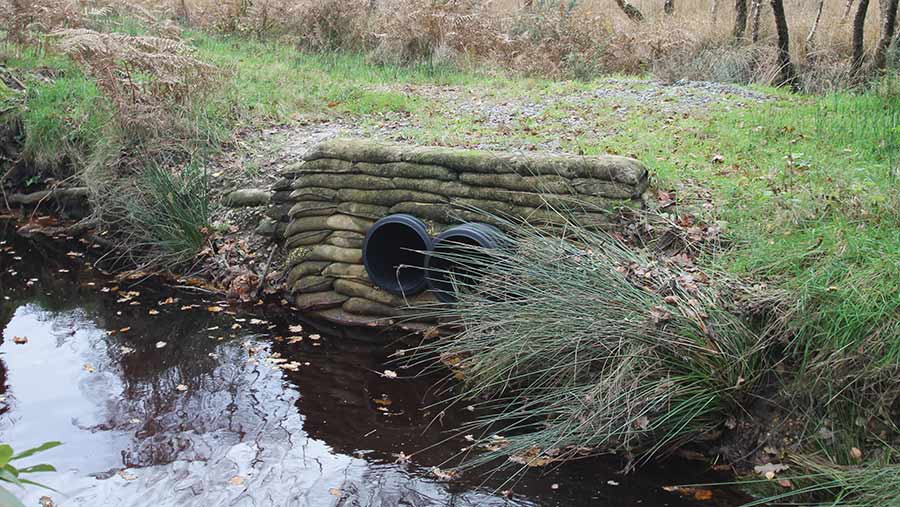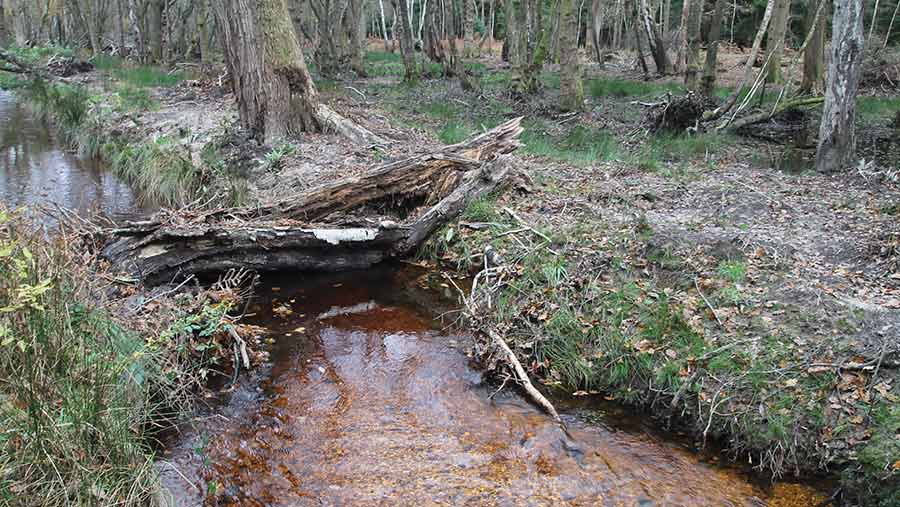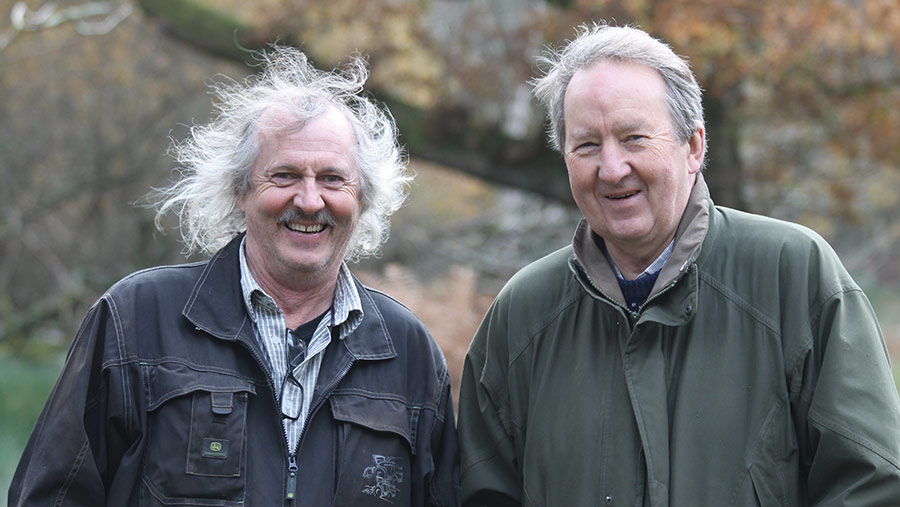How trading natural capital can help recoup BPS losses
 © MAG/Philip Clarke
© MAG/Philip Clarke Farmer interest in trading natural capital is in the ascendancy.
Legislation has just been passed requiring house builders and commercial developers to deliver at least a 10% improvement in biodiversity in relation to their activities from January 2024.
And last week Defra launched the third round of the Natural Environment Investment Readiness Fund, offering grants of up to £100,000 to help farmers prepare nature projects that will attract private sector investment.
See also: How upland farmers are pooling resources to plug funding gap
Co-operatives
It is therefore little surprise that the Environmental Farmers Group (EFG) has enjoyed sustained growth since it was launched in May 2022, to the extent that it now comprises of 268 farmers covering 146,800ha in Hampshire, Wiltshire, Dorset, Northamptonshire and north Lincolnshire.
A sister co-operative, Peakland Environmental Farmers, also launched earlier this year, and another, Swaledale and Wensleydale Environmental Farmers, is being set up in Yorkshire.
Combined, they represent 469 landowners and tenants, all with an interest in delivering for the environment and potentially trading natural capital.
Game and Wildlife Conservation Trust (GWCT) chief executive Teresa Dent, who helped establish the groups, says: “These new co-operatives are mobilising the sector to achieve nature recovery on farmland.
“By proving it is possible to combine profitable agriculture with thriving biodiversity on a grand scale, this model shows that farmers are not the problem, but the essential solution to hitting the government’s environmental targets.”
Offset trades
So far, about 45 EFG farmers have commissioned Natural Capital Advisory (NCA) – a subsidiary of the GWCT – to undertake ecological baseline assessments of their biodiversity, as well as potential nutrient reduction in watercourses, in order to engage in offset trades.
EFG chairman and Wiltshire arable farmer Rob Shepherd says: “The EFG has already agreed nutrient mitigation projects with developers, worth more than £1m.
“We are currently working with NCA in four catchments to deliver over 15 nutrient trades, and nine biodiversity trades, worth about £27m.”
An “equalisation” model means all farmers in the group will make something out of every trade.

Farmers can be rewarded for even simple environmental improvements © MAG/Philip Clarke
Three types of natural capital
- Nutrient neutrality Under retained EU legislation, 62 local authorities require new developments to be “nutrient neutral” on local watercourses, meaning developers must demonstrate and fund mitigation to win planning approval.
- Biodiversity net gain From 1 January 2024, developers will have to demonstrate a 10% improvement in biodiversity for their sites. This may be achieved on-site or by paying other landowners to deliver the uplift.
- Carbon credits These are produced when an activity either stores, avoids or reduces greenhouse gas emissions into the atmosphere. The resultant certificates can be sold on the open market.
Case study: Turning care for the environment into profit
Creating biodiversity net gain (BNG) has become part of the farming psyche at Bisterne Estate in Hampshire, as owner Hallam Mills tries to do the right thing for nature while putting the whole business on a financially stable footing.
Bisterne has been in Mr Mills’ family for more than 200 years, and he has been running the estate for the past 20 years, following a previous career in the energy sector.
The land stretches from the New Forest in the East to Dorset in the West, straddling the River Avon and covering 1,620ha.
Of this, just over 1,000ha is agricultural land, mostly farmed in-hand and down to pasture for a 600-strong milking herd, though there is about 300ha of arable ground too.
With a background in commerce, Mr Mills has been very aware of the threat to farm support payments and the financial potential of natural capital, and has set about developing “net gains” on the estate in a number of ways.
BNG projects
One example is a woodland water project – which also enjoys Countryside Stewardship and Wessex Rivers Trust support – designed to reduce the flood risk to cottages downstream of a forest brook.
It also aims to improve habitat for both aquatic species, such as sea trout, and woodland species, such as woodcock and nightjars.
Large areas of rhododendron have been cleared and overflow pipes have been slotted into the riverbank, ensuring that any excess water spills through into the surrounding woodland, rather than rushing headlong downstream.
Natural obstacles have also been left in the water to slow the flow and encourage spawning grounds.
Another project is being undertaken on the River Avon, to reintroduce water voles. Initially, these creatures were relocated from upstream Salisbury, when a car park was being built.
To encourage successful breeding, captive water voles were also brought in, and the river banks and surrounding ditches managed to provide an ideal environment.
Working closely with farm manager Martin Button, the plan is to extend this work to other water meadows.
A third BNG project involves the clearing out of old irrigation ponds on the estate, reprofiling the banks in a way that will encourage wildlife.
Crucially, with all these projects, a baseline audit has been made and habitat improvements will be measured over time to calculate any net gains, which will then be tradeable.
“It’s a very young market, but I am convinced there is an awful lot of private money out there from people and companies who need to show they are caring for the environment and will pay us to do it for them,” says Mr Mills.

Martin Button (left) and Hallam Mills © MAG/Philip Clarke
Environmental Farmers Group
While this is work he would probably be doing anyway, Mr Mills is an enthusiastic director of the Environmental Farmers Group (EFG), seeing several advantages to working with other like-minded farmers as part of a co-operative.
“The large and complex projects necessary to make the most of the new environmental schemes demand very careful contractual arrangements, a proper scientific base, and the ability to manage 30- to 80-year obligations,” he says.
As well as reducing risk, being part of a much larger group also provides trading opportunities that would not be so readily available to an individual.
“As part of the group, I feel like I am travelling with my headlights on full, rather than dipped,” he says. “Two years ago, I was travelling with no lights at all.”
Q&A – All you need to know about trading natural capital
Chartered surveyor Christopher Sparrow set up Recce Rural in 2020, and has since created Natural Capital Advisory, a joint venture with the Game and Conservation Wildlife Trust specialising in biodiversity.
The Environmental Farmers Group (EFG) is a key client.
How do you actually calculate biodiversity units?
We have a team of eight ecologists who use Natural England’s biodiversity metric to assess how many biodiversity net gain (BNG) units exist currently over a parcel of land.
The farmer or landowner then decides with the ecologist what sort of project they want to either improve the condition of that habitat, or create new habitat – for example, a new field margin.
This will be framed in a habitat management plan, quantifying the number of BNG units gained by the intervention, and setting out how the habitat is to be managed over a 30-year period.
An agreement is then signed with the local planning authority, and the project registered with Natural England. The BNG units are then tradeable.
Some farmers are wary of these new markets. Should they be?
In terms of nutrient neutrality and BNG, the plus side is we know that farmers have been executing the practical work necessary for years.
Farmers all know how to create a 12m or 24m margin, and they know how to convert a temporary pasture into a permanent one. Now it’s just a question of being properly paid for it.
Yes, the consultants employed to do the baseline and subsequent surveys need to be qualified and capable, but ultimately the local authority is signing off the calculation, so I’m entirely comfortable that BNG as a product for sale is sound.
How do you reward EFG members for any trades?
Membership is split into “cells”, which correspond to the Environment Agency’s “management catchment” boundaries.
We know that the trades are going to be fairly “lumpy”, so we wanted a mechanism that would reward all within that “cell” for the seller – power created by agreeing to work together.
In summary, the member undertaking the actual trade will get 88% of the revenue, 9% will go to all the farmers in that cell, with the final 3% going into the wider EFG, to help increase its capability.
How many trades have you done so far?
We have completed one nutrient neutrality deal, which secured £1.1m for Environmental Farmers Group, and have since agreed terms for a further four trades with a total value of £4.3m.
In the past three months, despite the rollout delays, we have begun trading BNG and have terms agreed for an initial £800,000 across two trades.
The EFG’s forward enquiry and trading pipeline is significant.
Is there more interest in BNG or nutrient neutrality?
In the south of England, nutrient neutrality is leading the charge, but with BNG formally activating in 2024, then I believe this will quickly catch up.
Most interesting to me is where we can provide both goods on the same parcel of land.
Is it better to trade natural capital independently, or lease your land to another operator?
It depends on your appetite for risk. A third-party intermediary does reduce risk, but it may result in a disproportionate discount from what you could be earning if you undertook the work yourself.
In the cases of BNG and nutrient neutrality, where the statutory authorities are hardwired into the trades and the goods themselves are relatively easy to create and maintain, there seems less incentive to give away significant value to a third party.
